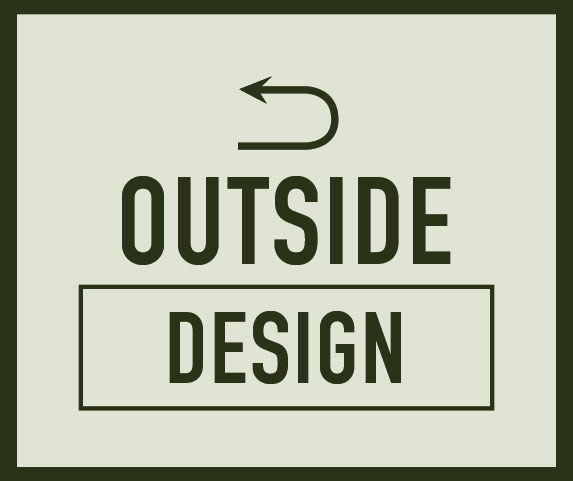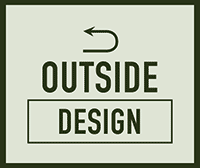Exhibition Events
-
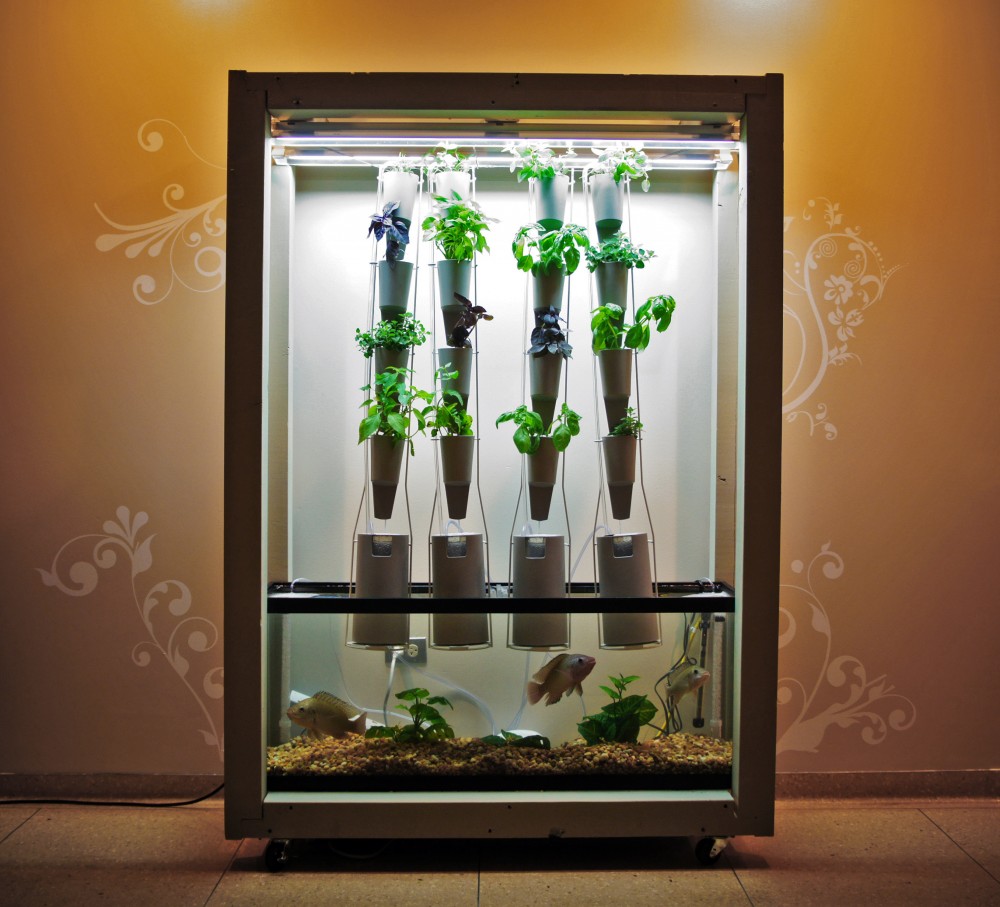
AIADO Alumni Weekend Event: Tour, Reception, and Procession
Saturday, September 19, 2015, 4:30-7:00 p.m.
Sullivan Galleries, 33 S. State St., 7th Floor -

Artist Talks
Thursday, October 1, 2015, 4:00–5:00 p.m. with reception to follow
Sullivan Galleries, 33 S. State St., 7th Floor -
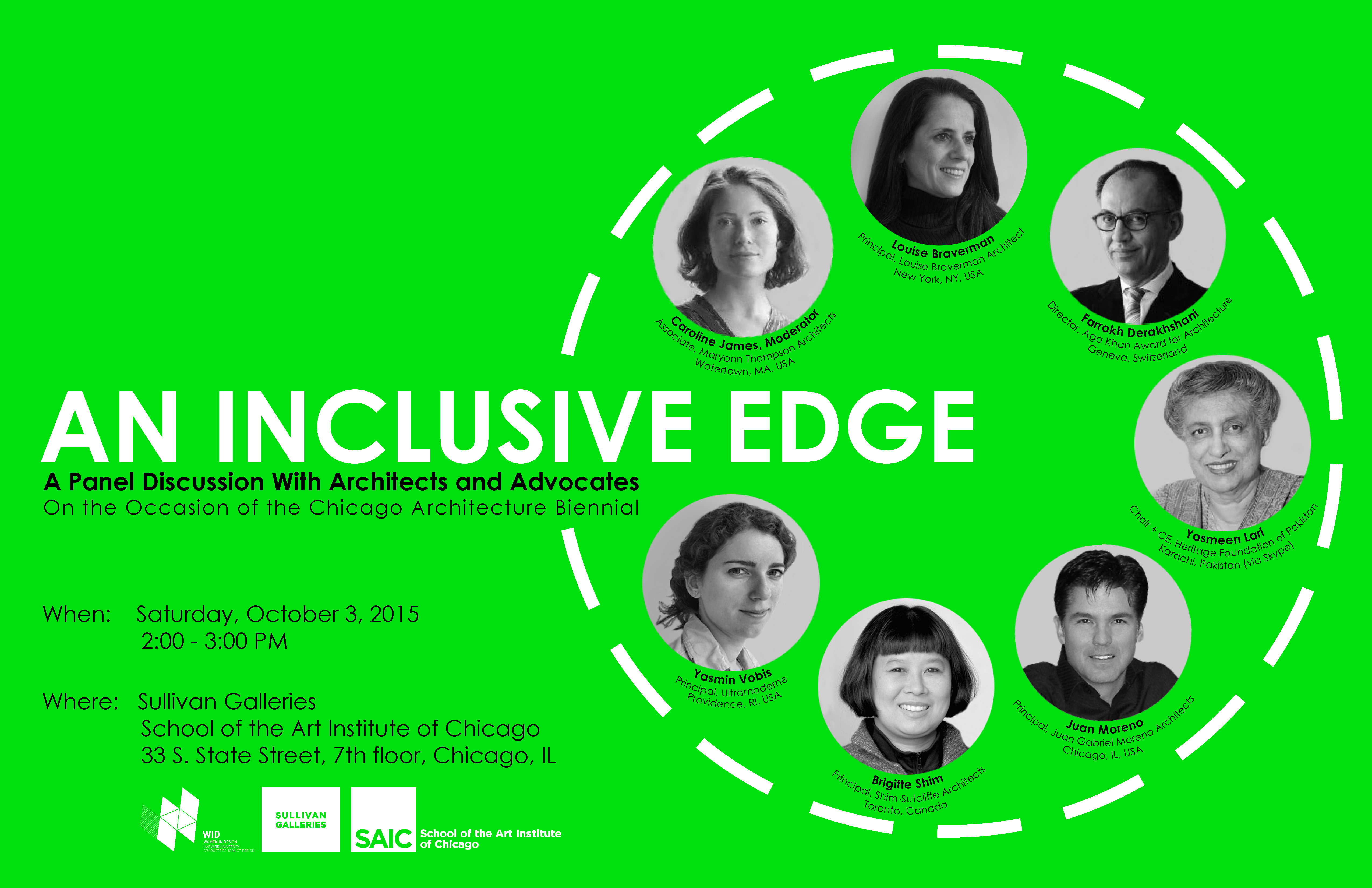
An Inclusive Edge: A Panel Discussion with Architects and Advocates
Saturday October 3, 2015, 2:00-3:00 p.m.
Sullivan Galleries, 33 S. State St., 7th Floor -

Black Gold Magic
Friday October 9, 2015, 4:30-6:00 p.m. and Saturday, October 10, 2015, 3:00-5:00 p.m.
Sullivan Galleries, 33 S. State St., 7th Floor -
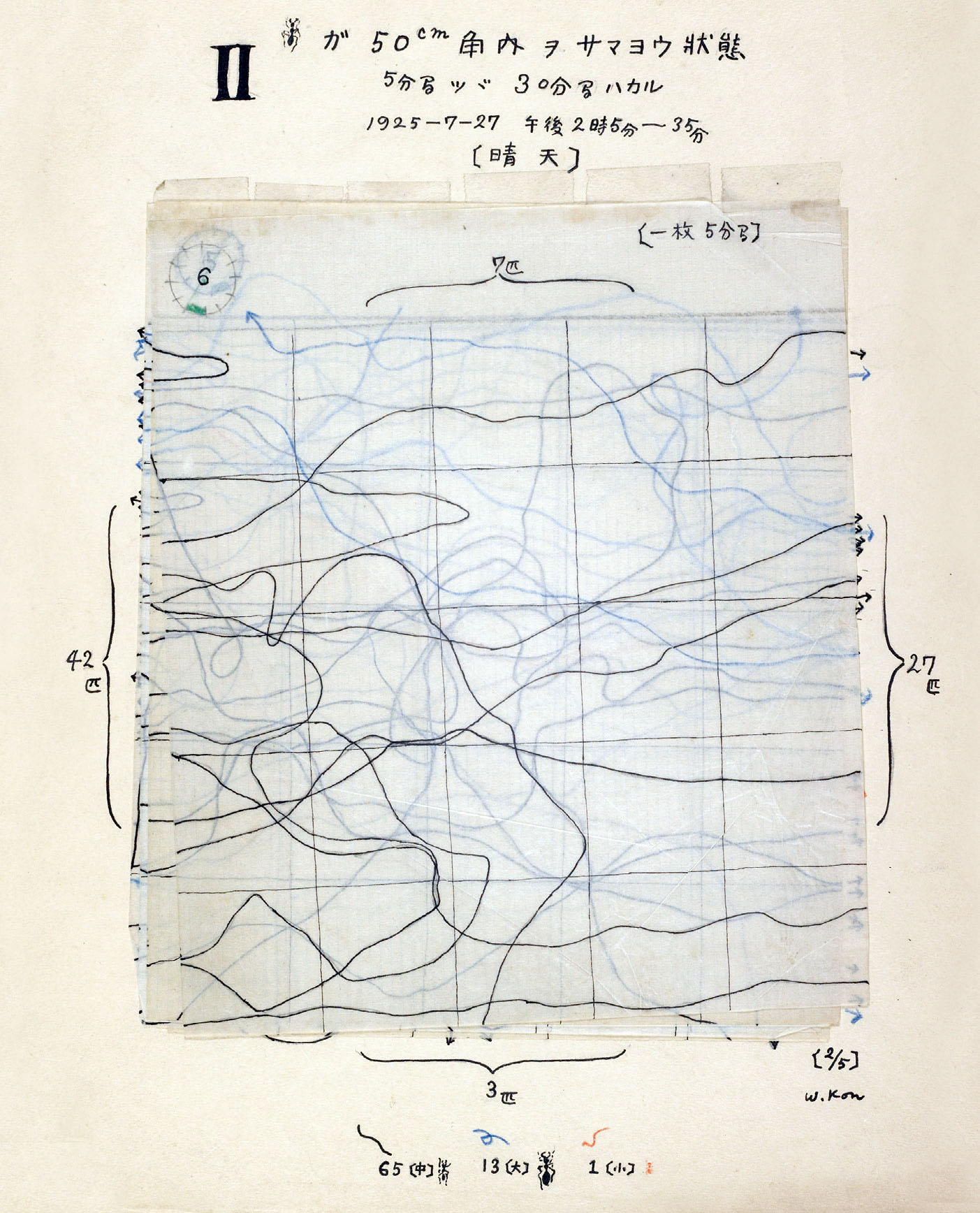
Thomas Daniell
Wednesday, October 14, 2015, 4:15-5:45 p.m.
Sullivan Galleries, 33 S. State St., 7th Floor -
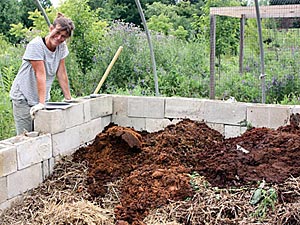
Taboo Subjects: Nance Klehm
Foul Odors & Loathsome Sites: a Practical Reorientation to our Waste Streams
Wednesday, October 21, 2015, 4:15-5:45 p.m.
Sullivan Galleries, 33 S. State St., 7th Floor -
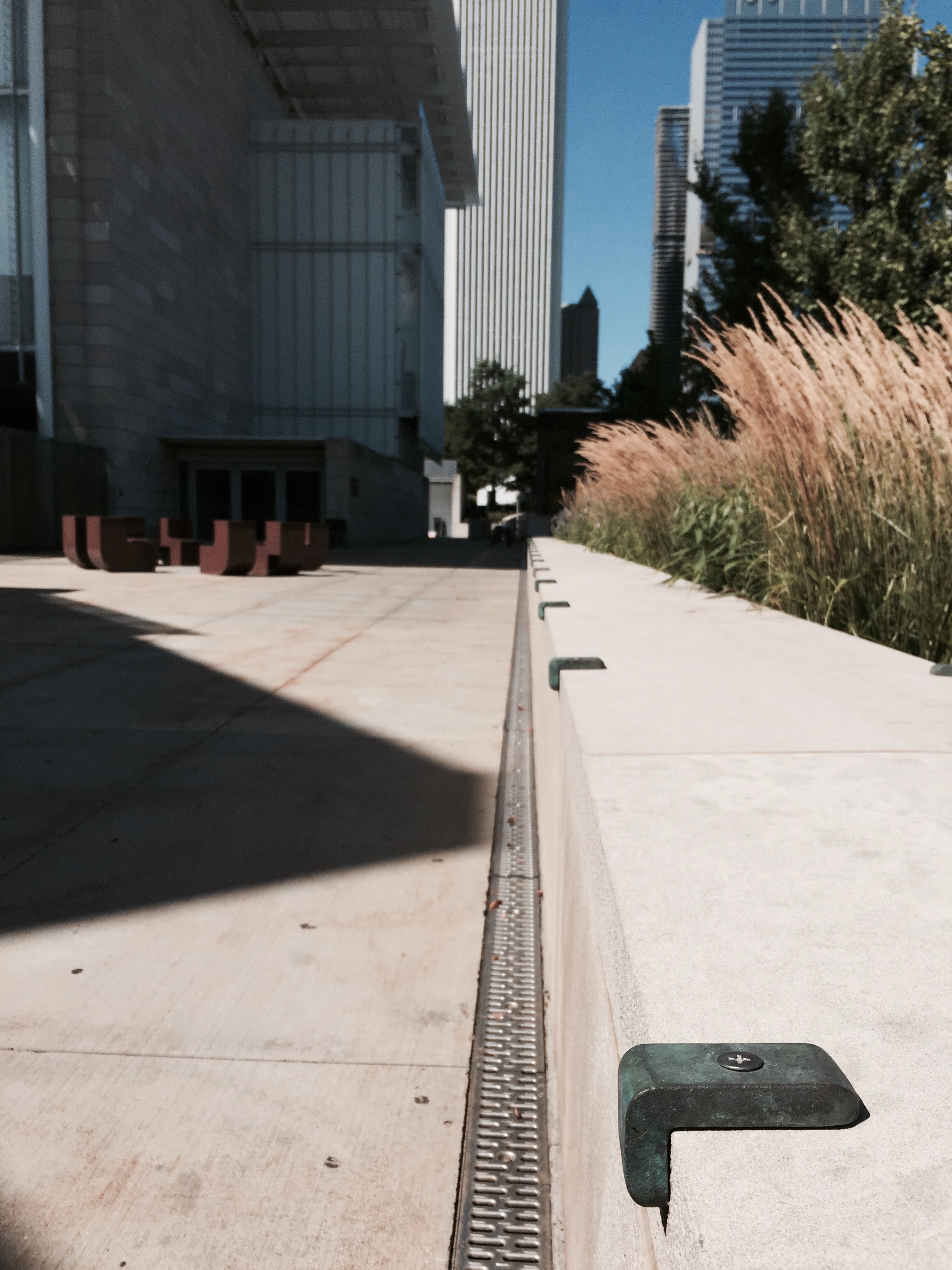
Surveying Defensive Topographies
Saturday, October 24, 2015, 1:00 p.m.
Sullivan Galleries 33 S. State St., 7th Floor -
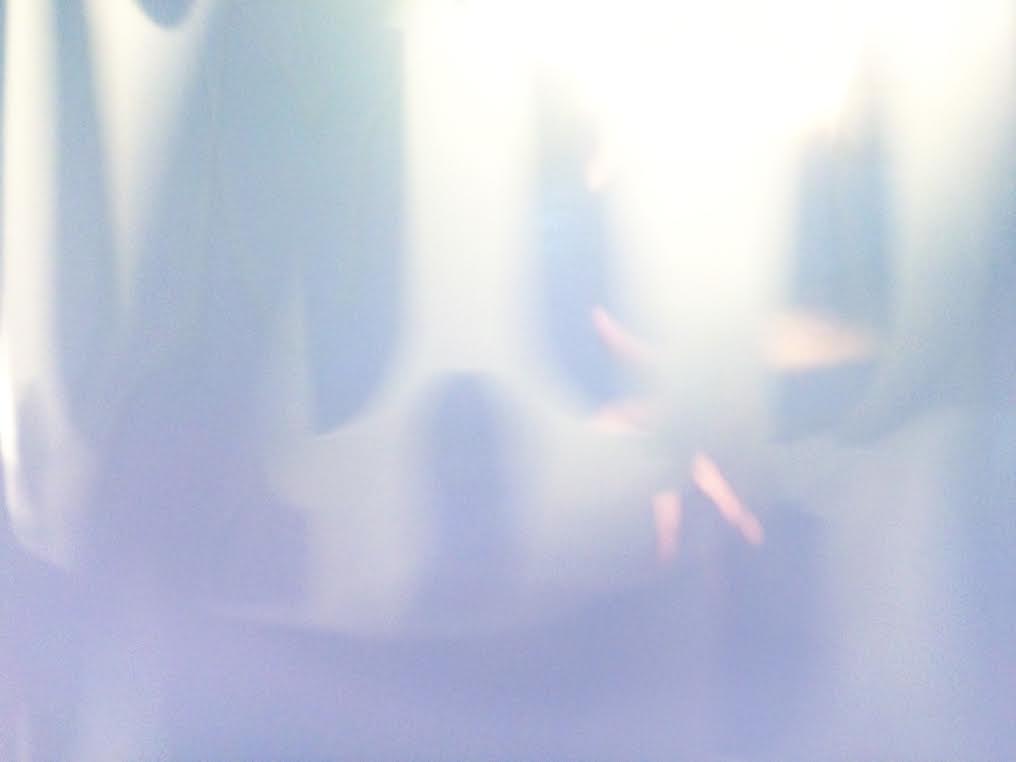
Ceremony of Equally Luminous Being
Saturday, October 24, 2015, 2:30 - 4:30 p.m.
Sullivan Galleries, 33 S. State St., 7th Floor -
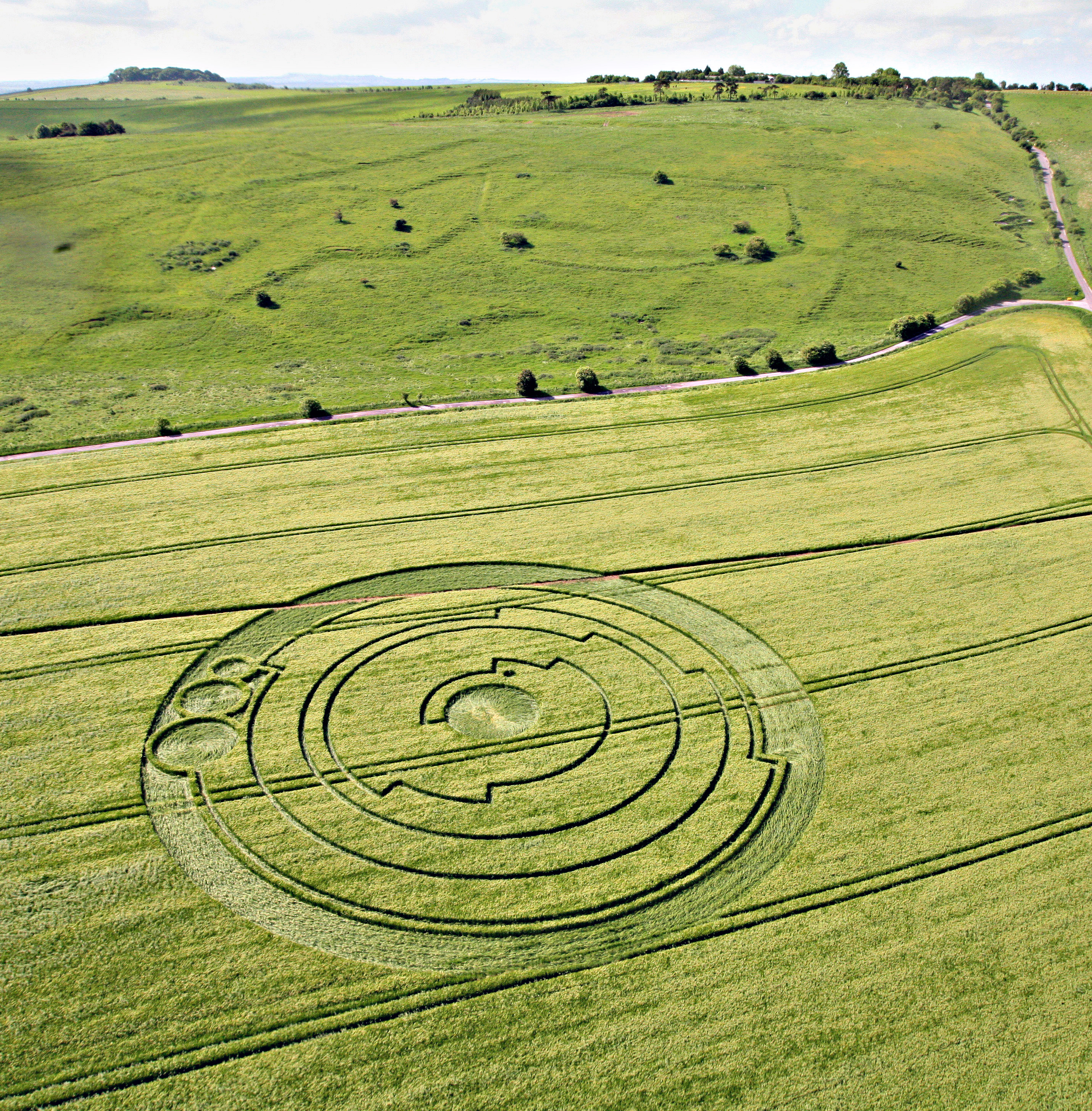
Taboo Subjects: Lucy Pringle
Crop Circles: Windows of Perception
Wednesday, October 28, 2015, 4:15-5:45 p.m.
Sullivan Galleries 33 S. State St., 7th Floor -
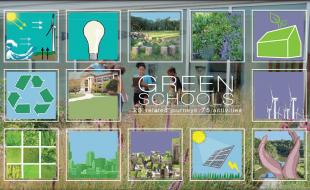
Balancing Ecologies: Green Schools and Green Cities
Thursday, October 29, 2015, 9:00 a.m. -1:00 p.m.
Sullivan Galleries 33 S. State St., 7th Floor -

Charles Adler: A Conversation About Creativity and the Economy
Thursday, November 5, 2015, 4:15 - 6:00 p.m.
Sullivan Galleries, 33 S. State St., 7th Floor -

Architecture and Inequality
Saturday, November 7, 2015, 9:30-11:30 a.m.
Sullivan Galleries, 33 S. State St., 7th Floor -

Taboo Subjects: Ashley Hlebinsky
From Protector to Perpetrator: Demystifying Firearms
Tuesday, November 10, 2015, 4:15-5:45 p.m.
MacLean Ballroom, 112 S. Michigan Ave. -
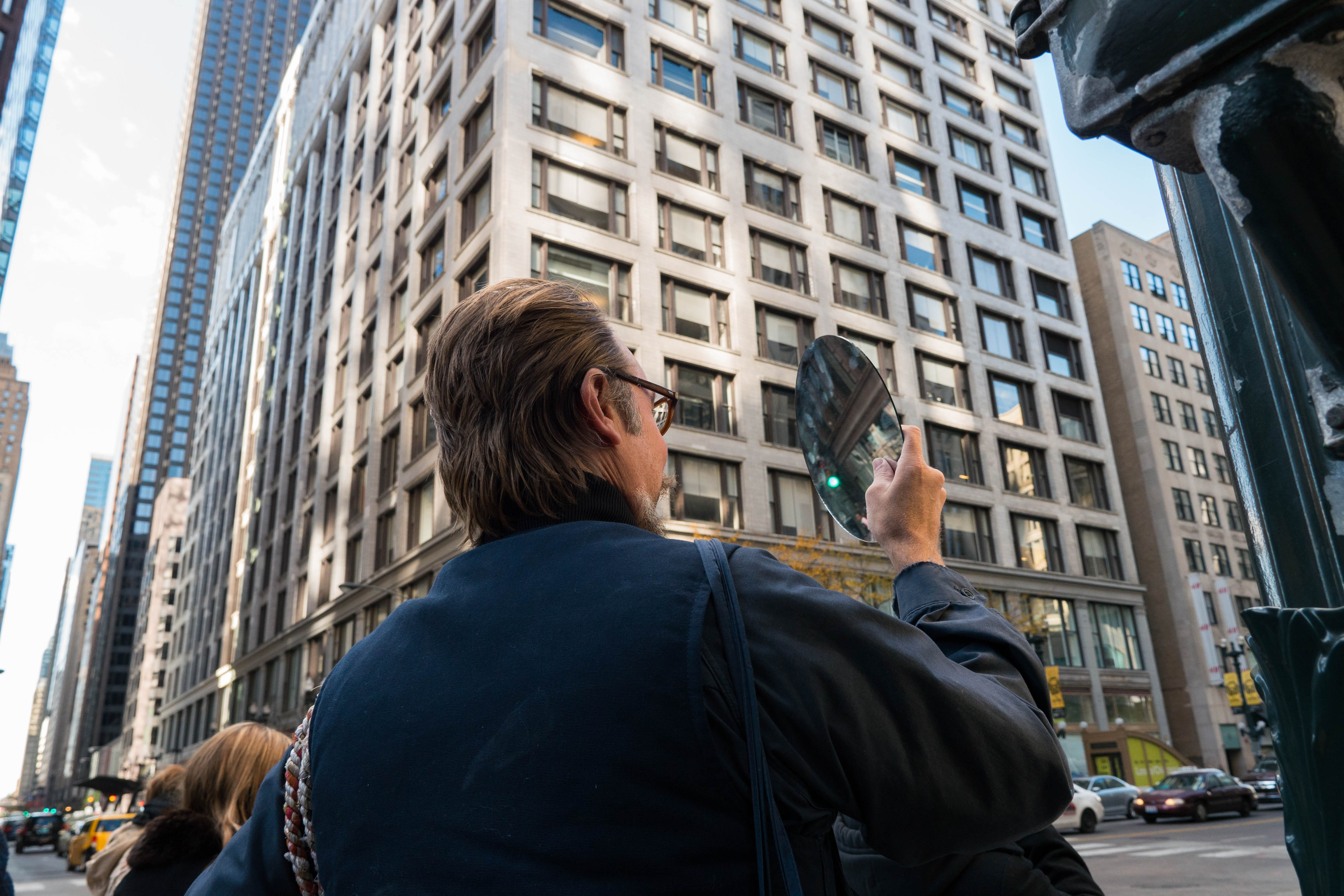
D-Centered Sense Walk
Saturday, November 14, 2015, 2:00 - 5:00 p.m.
Sullivan Galleries, 33 S. State St., 7th Floor -

Martin Kastner
Thursday, November 19, 2015, 4:15-5:45 p.m.
Sullivan Galleries, 33 S. State St., 7th Floor -
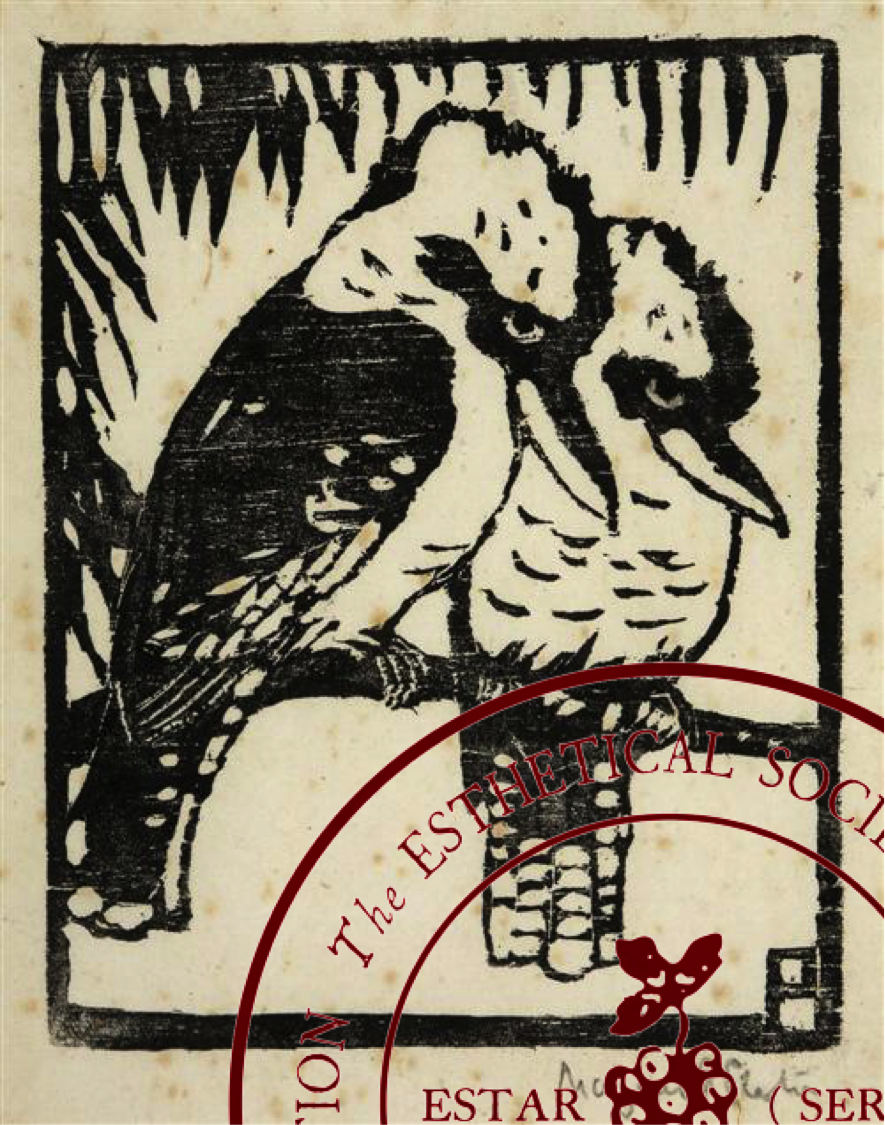
“I am not a flower”: Margaret Preston, Félix Régamey, and Metempsychotic Ikebana in the Interwar Period
Saturday, November 21, 2015, 2:00 - 4:00 p.m.
Sullivan Galleries, 33 S. State St., 7th Floor -
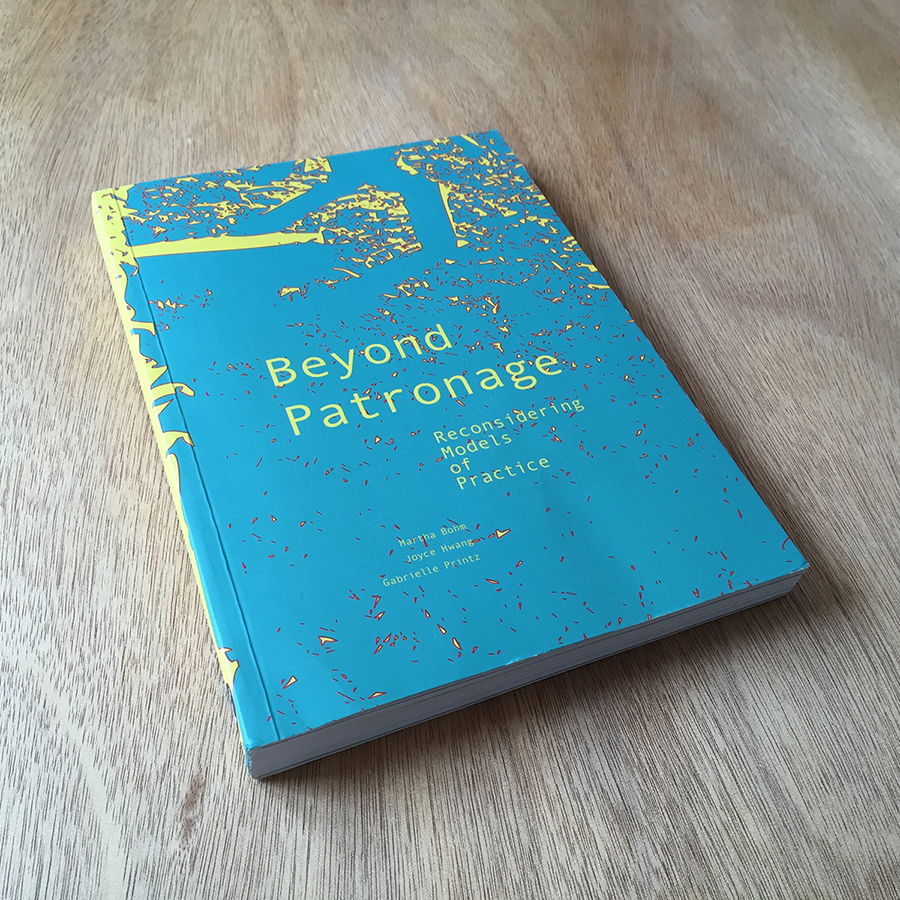
Beyond Patronage: Reconsidering Models of Practice Book Launch and Panel Discussion
Tuesday, December 1, 2015, 5:30 - 7:30 p.m.
Sullivan Galleries, 33 S. State St., 7th Floor -

Waste Streams Think Tank
Thursday, December 3, 2015, 12:00 - 3:00 p.m.
Sullivan Galleries, 33 S. State St., 7th Floor -
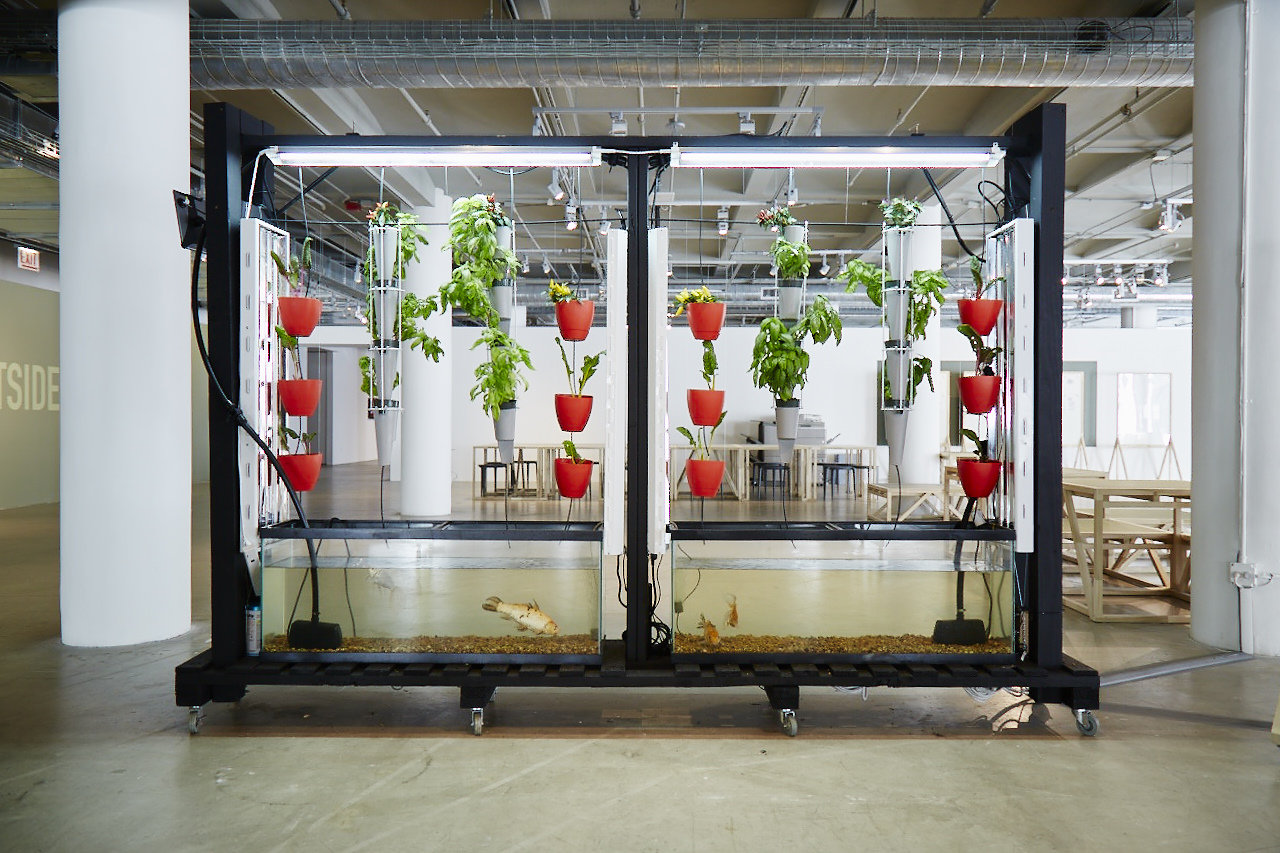
Aquaponics Workshops with Sweet Water Foundation
Friday December 4, 2015, 12:00 - 4:00 p.m. and Friday, December 11, 2015, 10:00 a.m. - 2:00 p.m.
SAIC Sullivan Galleries 33 S. State St., 7th Floor -

Our R Values U’s
Saturday, December 5, 2015, 4:00 - 7:00 p.m.
Sullivan Galleries, 33 S. State St., 7th floor -
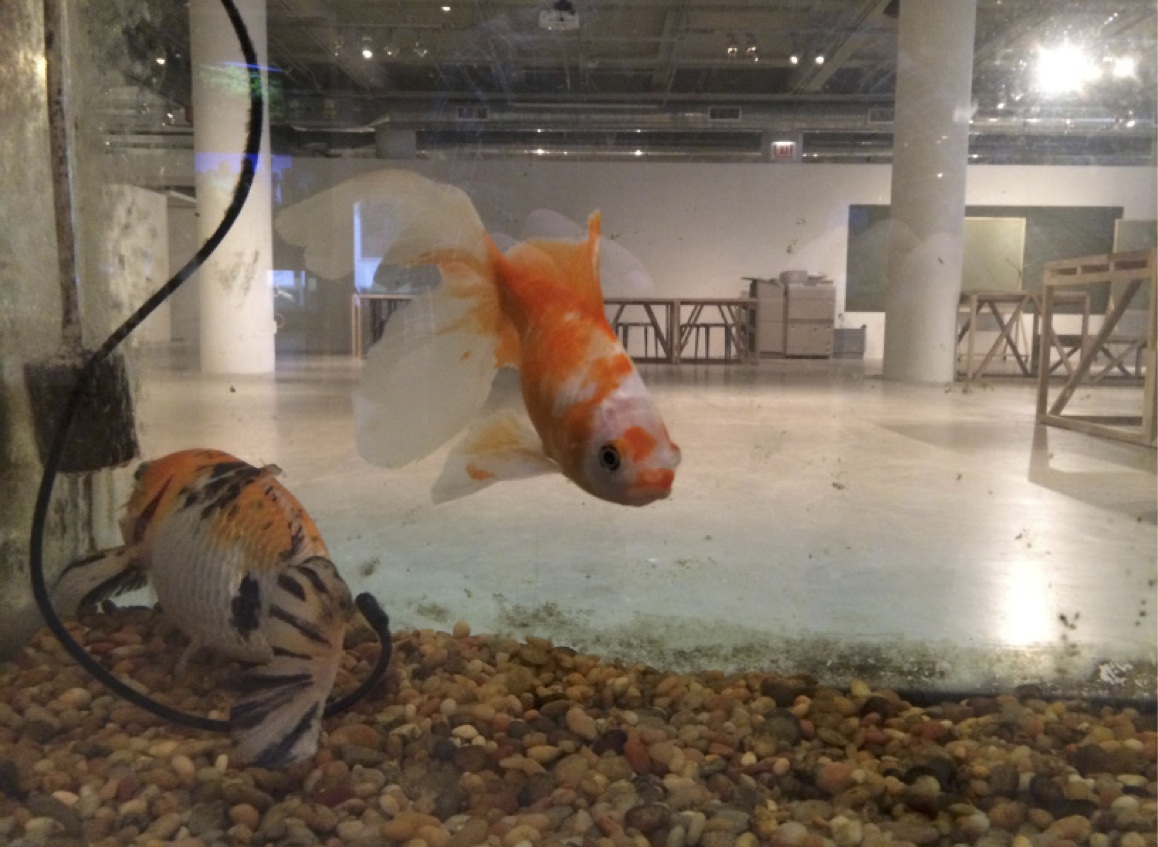
Listening Below and Beyond
Thursday, December 10, 2015, 4:15 - 6:00 p.m.
Sullivan Galleries, 33 S. State St., 7th Floor

Sweet Water Foundation
AIADO Alumni Weekend Event: Tour, Reception, and Procession
Saturday, September 19, 2015, 4:30-7:00 p.m.Sullivan Galleries, 33 S. State St., 7th Floor
SAIC Alumni are invited to attend exhibitions and receptions along with current faculty, students, and colleagues during the weekend of September 18th to 20th. AIADO’s Alumni events on that Saturday, September 19, seek to provoke conversations about the future, of design and education.
Exhibition Tour of Outside Design
4:30–5:30 p.m.
Sullivan Galleries
33 S. State Street, 7th Floor
Take an in-depth tour of Outside Design with Jonathan Solomon, curator and Director of Architecture, Interior Architecture and Designed Objects at SAIC.
Outside Design is a collateral and collaborative event of the first Chicago Architecture Biennial, which explores the turn in art and design towards biotechnology and ecological systems. The show will bring together five practices — Analog Media Lab (Urbana-Champaign), Ants of the Prairie (Buffalo), The Living (New York), Species of Space (Chicago), and Sweet Water Foundation (Chicago) — organized as a series of laboratories installed across the galleries, engaged throughout the fall by students, faculty, and visiting artists and designers. This mode of collaborative experimentation and exchange will continuously transform the gallery space, resulting in new projects and installations and pushing the boundaries of disciplinarily.
Design Night Alumni Reception
5:30–6:30 p.m.
33 S. State Street, 7th Floor
This reception is an opportunity to learn about the growing role of design at SAIC, and to share thoughts on the future of design education. It will include remarks from the Director of the Department of Architecture, Interior Architecture and Designed Objects and from the three Alumni Chairs of the event: Brian Bailey (MDes 2012); Zurich Esposito (MSHP 1995); and Deidre Jordan (MFA 1992).
Procession: Decentering Design
6:30 p.m.
33 S. State Street, 7th Floor
Immediately following the reception, 2015-16 Mitchell Visiting Professor Eric Ellingsen will lead a walk as part of his practice in decentering design, taking us from the gallery to the school-wide SAIC Alumni Block Party at 609 S. State Street (7PM-10PM; a showcase of alumni music, food, beverages, and activations!)

Eric Ellingsen, Species of Space
Artist Talks
Thursday, October 1, 2015, 4:00–5:00 p.m. with reception to followSullivan Galleries, 33 S. State St., 7th Floor

An Inclusive Edge: A Panel Discussion with Architects and Advocates
Saturday October 3, 2015, 2:00-3:00 p.m.Sullivan Galleries, 33 S. State St., 7th Floor
Today we are re-thinking the culture of architecture. Those who come to the field from diverse backgrounds are inclined to practice architecture in unexpected ways and places. Do they have the potential to disrupt the status quo to move the field forward? An Inclusive Edge, hosted on the occasion of the first Chicago Architecture Biennial, will focus on what these practitioners bring to the table that will provide clarity for the future practice of architecture. Co-sponsored with the Harvard GSD Women in Design.
Participants:
LOUISE BRAVERMAN, Principal, Louise Braverman Architect, New York, NY, USA
FARROKH DERAKHSHANI, Director, Aga Khan Award for Architecture, Geneva, Switzerland
JUAN MORENO, Principal, Juan Gabriel Moreno Architects, Chicago, IL, USA
BRIGITTE SHIM, Principal, Shim-Sutcliffe Architects, Toronto, Canada
YASMIN VOBIS, Principal, Ultramoderne, Providence, RI, USA
CAROLINE JAMES (moderator), Associate, Maryann Thompson Architects, Watertown, MA, USA

Black Gold Magic
Friday October 9, 2015, 4:30-6:00 p.m. and Saturday, October 10, 2015, 3:00-5:00 p.m.Sullivan Galleries, 33 S. State St., 7th Floor
Please join us for the public invocation of the spirits on October 9, 2015, 4:30-6:00 p.m.
And October 10, 2015, 3:00-5:00p.m. for inside and outside actions, discussions, and performances.
Black Gold Magic is a growth in the Garden of D Centered Senses and a member of the Radical Imagination Community, Outside Design, Sullivan Galleries.
Black Gold Magic is a Species of Space co-production.

Thomas Daniell
Wednesday, October 14, 2015, 4:15-5:45 p.m.Sullivan Galleries, 33 S. State St., 7th Floor
This lecture will trace the history of Modernology, an approach to observing and documenting Japanese urban environments and behaviors that was invented in the early twentieth century and has inspired many subsequent generations of fieldwork by groups of architects, artists, anthropologists, sociologists, and hobbyists. With a wit and eccentricity reflected in their names – Lost Items Research Institute, Architectural Detective Agency, Thomasson Observation Center, Street Observation Society, Atelier Bow-Wow – they search the city for moments of beauty and interest in everyday places, objects, and activities, cumulatively producing an irreplaceable archive of overlooked urban phenomena, of ephemera made permanent.
Thomas Daniell is currently Head of the Department of Architecture and Design at the University of Saint Joseph, Macau, prior to which he spent twenty years as a practicing architect in Japan. He holds a B.Arch from Victoria University, an M.Eng from Kyoto University, and a Ph.D from RMIT. A two-time recipient of grants from the Graham Foundation, he is author of FOBA: Buildings (2005), After the Crash: Architecture in Post-Bubble Japan (2008), Houses and Gardens of Kyoto (2010), Kiyoshi Sey Takeyama + Amorphe (2011), and Kansai 6 (2011). His book An Anatomy of Influence is forthcoming from AA Publications.
Presented with the Graham Foundation for Advanced Studies in the Fine Arts.
THE WILLIAM BRONSON AND GRAYCE SLOVET MITCHELL LECTURE SERIES, free and open to the public. AIA Learning Units available for most lectures and events, see http://www.saic.edu/aiado for details.

Nance Klehm, humble pile (ongoing, 2008)
Taboo Subjects: Nance Klehm
Wednesday, October 21, 2015, 4:15-5:45 p.m.Sullivan Galleries, 33 S. State St., 7th Floor
Foul Odors & Loathsome Sites: a Practical Reorientation to our Waste Streams
At a time when the word organic defines responsible living and cities wring their hands over stormwater and the overtaxed sewer system, how do we put two and two together and harvest the rich minerals and organisms present in our own human excrement? How can it be turned into compost used to grow plants and heal urban soil? As much a cultural taboo as an environmental risk, Nance Klehm will help pull the thorn of our prejudices and demonstrate that there is a real solution to reconnecting our bodies to earth – sane, safe, low-tech sanitation.
Nance Klehm is a steward of the earth. She is an ecological systems designer, landscaper, horticultural consultant, and permacultural grower, as well as an in demand consultant, speaker, and teacher. She is respected internationally for her work on land politics and growing for fertility. Nance’s recent undertaking, The Ground Rules, is a unique community and earth-building initiative that seeks multiple communities to work with. The Ground Rules creates community-run Soil Centers where organic waste from local businesses is processed into high quality soil amendment that is used as soil amendment and bioremediation tool. Community members are trained in composting and bioremediation techniques in order to create a long-lasting local relationship with soil and soil issues. She is the founder of Social Ecologies, an L3C design and education firm that has designed and built a variety of ongoing ecological and system-regenerating projects.
http://spontaneousvegetation.net
This lecture is part of the Taboo Subjects series organized by Ben Nicholson, Associate Professor in SAIC’s Department of Architecture, Interior Architecture, and Designed Objects (AIADO), and is part of the William Bronson and Grayce Slovet Mitchell Lecture Series.
Taboo Subjects considers how every discipline has its own kind of discursive no-go zone. Architecture, landscape, and design, with the related fields of system and infrastructure design, has taboo subjects of conversation and practice, that it has not yet found the language to mull over constructively.

Surveying Defensive Topographies
Saturday, October 24, 2015, 1:00 p.m.Sullivan Galleries 33 S. State St., 7th Floor
Surveying Defensive Topographies
Topographies of Defense—a project lead by SAIC graduate students Michael Rado, Louis Kishfy, and Frances Lightbound—will examine design in the urban sphere that functions primarily to discourage human usage: homeless spikes, decorative security facades, anti-skate rails, bollards, benches, planters, and landscaping elements. With a focused lens on Chicago, the project aims to catalogue defensive architecture within the city in an interactive online archive and initiate debate around the implications of defensive design through workshops and a symposium to be hosted in Spring 2016. This event, hosted in the Outside Design exhibition space, comprises a presentation by project members of their initial research findings and vision for the project as well as an interactive workshop inviting participants to document and discuss examples of defensive architecture within the Chicago Loop.

Ceremony of Equally Luminous Being
Saturday, October 24, 2015, 2:30 - 4:30 p.m.Sullivan Galleries, 33 S. State St., 7th Floor
Eric Ellingsen and artist-in-residence Christina Kousgaard
Presented by the Radical Imagination Community, Chicago in the D-centered Garden of the Senses
The Ceremony of Equally Luminous Being is a series of micro-performances to soften the human lattice. Performances from dream interpreters to soap film dances will take place in a garden sense-based walk for transforming interiors. Join the choreography of loosening up your humanness in order to meet and witness the union of two objects: Spanish pipe el Tubo and German Violin Bow Guygin. See what you say. Dream Your Machine.

Lucy Pringle, Barbury Castle
Taboo Subjects: Lucy Pringle
Wednesday, October 28, 2015, 4:15-5:45 p.m.Sullivan Galleries 33 S. State St., 7th Floor
Crop Circles: Windows of Perception
For hundreds of years, large geometric designs have appeared in the fields of Southern England. Some crop circles emit an energy that has permanently or temporarily disabled varied electrical equipment such as cameras and computers. Dowsers, using pendulums and dowsing rods, record dramatic shifts of the energy lines in crop circles and mathematicians are confounded by some of their geometric constructions. Lucy Pringle will share her findings and also discuss her scientific research into the temporary relief of Parkinson’s disease.
Lucy Pringle is a founding member of the Centre for Crop Circle Studies and is an international authority on the subject and the pioneer researcher into the effects of electromagnetic fields on living systems. Her research is currently focusing on the temporary relief of Parkinson’s disease. She is also an aerial photographer and has exhibited at The Independent Photographer’s Gallery in Battle, Sussex and Denbighshire County Council has also hosted a traveling exhibition of her work. The BBC has produced a program on her research, which was shown on Inside Out. She has lectured world wide and contributes to magazines including Kindred Spirit, The Cerealogist, Caduceus, The Circular, The P.S.I. Researcher, A Quest for Knowledge, and the Journal of The British Society of Dowsers. She is the author of three books: Crop Circles: The Greatest Mystery of Modern Times (1999); Crop Circles (2004); Crop Circles, Art in the Landscape (2007). She has also published a book of cartoons, Paranormal Pranks, drawn by Peter Eade. She is a member of The British Society of Dowsers and a Founder Member and Chairman of UNEX (Unexplained Phenomena Research Society). She lives in Hampshire and studied in England, France, and Switzerland.
http://shop.lucypringle.co.uk/
This lecture is part of the Taboo Subjects series organized by Ben Nicholson, Associate Professor in SAIC’s Department of Architecture, Interior Architecture, and Designed Objects (AIADO), and is part of the William Bronson and Grayce Slovet Mitchell Lecture Series.
Taboo Subjects considers how every discipline has its own kind of discursive no-go zone. Architecture, landscape, and design, with the related fields of system and infrastructure design, has taboo subjects of conversation and practice, that it has not yet found the language to mull over constructively.

Balancing Ecologies: Green Schools And Green Cities
Balancing Ecologies: Green Schools and Green Cities
Thursday, October 29, 2015, 9:00 a.m. -1:00 p.m.Sullivan Galleries 33 S. State St., 7th Floor
HG Wells famously said that people are in a race between catastrophe on one side and education on the other. OXFAM reports the simultaneous breach of the environmental ceiling for a safe and just space for humanity to inhabit through biodiversity loss, climate change, destabilized nitrogen/ phosphorous cycles, while it simultaneously records the failure of social institutions to answer the global need for water, food, energy, income, equality and education. As more than 50% of the world’s population moves into cities, this workshop presents methods for greening ‘the skin of the earth’ from individual dwellings, to school campuses to healthy cities. CPS Middle school students will propose green infrastructure place making in cities at three scales adding sustainable practices to their homes, schools and neighborhoods.

Charles Adler: A Conversation About Creativity and the Economy
Thursday, November 5, 2015, 4:15 - 6:00 p.m.Sullivan Galleries, 33 S. State St., 7th Floor
This will be an evening of show & tell and conversation about our future economy driven by independent creatives. Hear stories by some of the 60+ individuals that transformed a 15,000 square foot meat packing plant into a creative center for 31 days as part of the Center for Lost Arts. Using 3D printers, drill presses, spray cans, tomato sauce, and sewing machines, the group created 3D printed bricks, pizza, a boat, and more.
For more information on Charles Adler and the Center for Lost Arts, visit: http://lostarts.co/ and http://charles-adler.com/
This program is presented in conjunction with the exhibition Outside Design, currently on view through December 19. Outside Design is a collateral event of the Chicago Architecture Biennial.

Architecture and Inequality
Saturday, November 7, 2015, 9:30-11:30 a.m.Sullivan Galleries, 33 S. State St., 7th Floor
Aggregate Architectural History Collaborative
What can architectural history teach us about the history of inequality in the United States? Original research presented on subjects ranging from the American welfare state and capitalism, skyscrapers and professionalism, to contemporary race and biopolitics.
featuring:
Perceiving Race in the Skyscraper’s Shadow
Adrienne Brown, University of Chicago
“You are not a profession that has distinguished itself…”
Sharon Haar, University of Michigan
There Grows the Neighborhood: Transforming BLIGHT to LIFE
Emmanuel Pratt, Sweet Water Foundation
and Aggregate members:
Is This What Change Looks Like?
Daniel M. Abramson, Tufts University
Building Pipelines
Jonathan Massey, California College of the Arts
Infrastructures of Inequality
Meredith TenHoor, Pratt Institute

Buffalo Bill Center of the West, Cody, Wy, USA. Gift of Olin Corporation, Winchester Arms Collection, 1988.8.3283 & 1988.8.2609.
Taboo Subjects: Ashley Hlebinsky
Tuesday, November 10, 2015, 4:15-5:45 p.m.MacLean Ballroom, 112 S. Michigan Ave.
From Protector to Perpetrator: Demystifying Firearms
The design and manufacture of firearms stands as one of the great achievements of the Industrial Age. The process pioneered the ‘American System’ of manufacture that standardized mechanical reproduction on a massive scale. Gun and ammunition design has its own logic and, when demystified, can inform other disciplines. Hlebinsky will discuss the ways in which firearms are stigmatized and how those perceptions can lead to obfuscation of the distinction between firearms and firearms violence in history.
Ashley Hlebinsky earned her Master’s in American History and Museum Studies from the University of Delaware. While in school, she researched at the Smithsonian Institution’s National Firearms Collection for three years. She currently is the Curator of the Cody Firearms Museum at the Buffalo Bill Center of the West in Cody, Wyoming. Hlebinsky manages a collection of over 7,000 firearms spanning 1425 to modern day and studies the perceptions of firearms in culture. Hlebinsky also is a freelance firearms writer, consultant, and television personality on firearms history.
This lecture is part of the Taboo Subjects series organized by Ben Nicholson, Associate Professor in SAIC’s Department of Architecture, Interior Architecture, and Designed Objects (AIADO), and is part of the William Bronson and Grayce Slovet Mitchell Lecture Series.
Taboo Subjects considers how every discipline has its own kind of discursive no-go zone. Architecture, landscape, and design, with the related fields of system and infrastructure design, has taboo subjects of conversation and practice, that it has not yet found the language to mull over constructively.

D-Centered Sense Walk
Saturday, November 14, 2015, 2:00 - 5:00 p.m.Sullivan Galleries, 33 S. State St., 7th Floor
Join SPECIES OF SPACE and the Radical Imagination Community, Chicago
Performance by Eric Ellingsen in collaboration with participants
D-Centered Sense is a simple choreography of being moved. D-Centered Sense asks what are the contracts implicit in how we use public space. Through simple actions, oriented around a philosophy of slowing down D-Centered Sense walk is an art walk in which different sense systems are constrained as you move through public space.
Hearing more by seeing less. Laying down the line. Moving by seeing what is not there by seeing how seeing works. Feel what you mean by paying attention. Be conscious while being conscious. Start in time. Feel multiple centers. End somewhere close to where we begin.

Martin Kastner
Thursday, November 19, 2015, 4:15-5:45 p.m.Sullivan Galleries, 33 S. State St., 7th Floor
THE WILLIAM BRONSON AND GRAYCE SLOVET MITCHELL LECTURE SERIES, free and open to the public. AIA Learning Units available for most lectures and events, see http://www.saic.edu/aiado for details.

“I am not a flower”: Margaret Preston, Félix Régamey, and Metempsychotic Ikebana in the Interwar Period
Saturday, November 21, 2015, 2:00 - 4:00 p.m.Sullivan Galleries, 33 S. State St., 7th Floor
An afternoon with ESTAR(SER) at the SAIC Extension Gallery
D. Graham Burnett and Caitlin Sweeney ESTAR(SER) Editorial Committee
Presented by Eric Ellingsen and the Radical Imagination Community, Chicago
Across a career that reshaped Australian art, the celebrated and controversial Modernist Margaret Preston brought an uncanny intensity to the depiction of flowers—in both oil and woodblock print. Of her iconic self-portrait, now hanging in the Gallery of New South Wales in Sydney, she remarked acidly: “I am a flower painter—I am not a flower.” But was the distinction so simple? Perhaps not. New evidences suggest Preston may well have been familiar with exercises of metempsychotic self-exchange with flowering plants, techniques used by esoteric practitioners of the Japanese art of Ikebana or Kado, the ancient art of flower-arranging. Was Preston possibly initiated into occult techniques of flower gazing by associates of the Order of the Third Bird?
On 21 November, visitors to the SAIC Extension Gallery will have the opportunity to hear a preliminary report on this fascinating nexus of conjured problems, and will be invited to experiment firsthand with the research process by means of a series of reconstructed attentional exercises staged in the gallery.
About ESTAR(SER): The Esthetical Society for Transcendental and Applied Realization (now incorporating the Society of Esthetic Realizers) is an established body of private, independent scholars who work collectively to recover, scrutinize, and (where relevant) draw attention to the historicity of the Order of the Third Bird. (www.estarser.net) The “Preston Working Group” consists of Sal Randolph, Caitlin Sweeney, Audra Wolowiec, and D. Graham Burnett.
About the Order of the Third Bird: There remains some confusion about the history and practices of the body known as The Order of the Third Bird, but evidence points to its having been for some time a loose network of cell-like groups that engage in ritualized forms of sustained attention to works of art. The canons of secrecy around these activities—their structure and purposes—have traditionally been sufficiently restrictive as to leave some doubt as to whether any individual professing knowledge of the Order could in fact be genuinely associated therewith.

Photo courtesy of Joyce Hwang
Beyond Patronage: Reconsidering Models of Practice Book Launch and Panel Discussion
Tuesday, December 1, 2015, 5:30 - 7:30 p.m.Sullivan Galleries, 33 S. State St., 7th Floor
For the Chicago book launch of Beyond Patronage, panelists Joyce Hwang, Martha Bohm, Gabrielle Printz, Sean Lally, Amanda Williams, Pablo Garcia, and Ann Lui will present projects centering around the book’s three categories of practice: Architect as Initiator, Architect as Detective, and Architect as Advocate. Panelists will each produce a Diagram of Exchanges, which will articulate and visualize the relationships that both structure and emerge from their work. If architects and patrons are assuming new guises within the relational armature of architectural practice, how can we further discern these relationships and exchanges, and their effects?
Beyond Patronage: Reconsidering Models of Practice is a book of essays, projects, and interviews that examine emerging forms of architecture and design sponsorship. Throughout the twentieth century, private clients enabled architects to develop and realize their most significant work. Today, the landscape of patronage is shifting. While the role of private clients is still central to the profession, an increasing number of architects and design practitioners are actively cultivating partnerships with not-for-profits, granting agencies, educational institutions, and other public organizations. How are these broader relationships redefining the role of patronage in architecture?
Editors: Martha Bohm, Joyce Hwang, Gabrielle Printz
Contributors: Despina Stratigakos, Stephanie Davidson, Hansy Better Barraza, Jon King, Micaela Barker, Linda Taalman, Joseph Swerdlin, Georgeen Theodore, Juliette Spertus, Robert Yoos, Natalie Jeremijenko, Lola Sheppard, Kim Dai, Yolande Daniels, Lori Brown.
Book Designer: Joel Brenden

Waste Streams Think Tank
Thursday, December 3, 2015, 12:00 - 3:00 p.m.Sullivan Galleries, 33 S. State St., 7th Floor
What really happens to SAIC’s “waste” after it leaves campus? Waste Streams Think Tank will bring together the people who manage SAIC’s waste streams in a collective conversation about waste at SAIC. The discussion will focus on what institutional functions create waste, what happens to waste once it leaves campus and what opportunities exist to further sustainable systems on campus.
Featured participants include representatives from key institutional partners Belmont Technology Remarketing (electronics), Lakeshore Recycling Systems (single stream recycling & landfill) and Collective Resources (compost) alongside administrative staff from Instructional Resources Facilities Management (IRFM), Computer Resources Information Technology (CRIT), and Food For Thought (FFT). The conversation will be hosted by Euree Kim (undergraduate student), Drea Howenstein (faculty), and Megan Isaacs (staff).

Aquaponics Workshops with Sweet Water Foundation
Friday December 4, 2015, 12:00 - 4:00 p.m. and Friday, December 11, 2015, 10:00 a.m. - 2:00 p.m.SAIC Sullivan Galleries 33 S. State St., 7th Floor
Come join Emmanuel Pratt, co-founder and director of the Sweet Water Foundation, for workshops to learn the basics of creating aquaponic systems!

Our R Values U’s
Saturday, December 5, 2015, 4:00 - 7:00 p.m.Sullivan Galleries, 33 S. State St., 7th floor
Language in fact exists like air. It is a medium in which we all exist. It is not that we actually learn language, it is more that language learns us.
– Francisco Varela
The Species of Space and the Radical Imagination Community, Chicago presents Jenny Boully, Craig Dworkin, T Clutch Fleischmann, Christian Hawkey, with Eric Ellingsen and others
Here, roughly 3.5 billion years ago, ecologist Daniel Bodkin writes, anaerobic algae mats breathed the air we circulate now. These breathing bacteria produced the environment that produced them. These small breathing things became the iron ore bands that forms the core of our steel belts and structural cores now. What do we circulate now? How does how we say what we say say more than what we say? Architects and thermal engineers measure R values as a gradient of heat exchange through respiring wraps and building envelopes and skins. Now when we breath we speak out. Speaking out is our hours of urbanisms. Each word we speak carries real forces. Sociolinguists, like William Labov, designed techniques to measure socio-demographic differences by measuring how different populations of people pronounced the letter R in public spaces along the east coast of the US. Place your hand in front of your mouth and say ARE out loud 9 times and you’ll feel the heat difference between one side of your hand and another.
Our R values U’s is about feeling the difference of what we say as an urban force shaping the design of our cities today. This title will probably have changed by the time your read this. What happened as Our R values U’s will change by how we talk about what has yet to happen yet. Design today is also about learning how to speak out today. How to say what we mean. How we here each other.
Please join us for what we don’t know will happen until you get hear.

Detail of installation by Emmanuel Pratt, Sweet Water Foundation in Outside Design, SAIC Sullivan Galleries, 2015. Photo: Eric Leonardson.
Listening Below and Beyond
Thursday, December 10, 2015, 4:15 - 6:00 p.m.Sullivan Galleries, 33 S. State St., 7th Floor
Explore the threshold of human auditory senses with SAIC’s Eco-Sensing and the Soundscape class led by Eric Leonardson and Lindsey French
Focusing on the nonhuman actants in the space, gallery visitors will be guided in practices for listening below and beyond the threshold of normal human hearing. Students will lead visitors through a number of group and individual acts of listening that will emphasize the human body as a listening device and activate the gallery as a site for acoustic investigation. Presented in collaboration with graduate students from the Arts Administration and Policy department.
